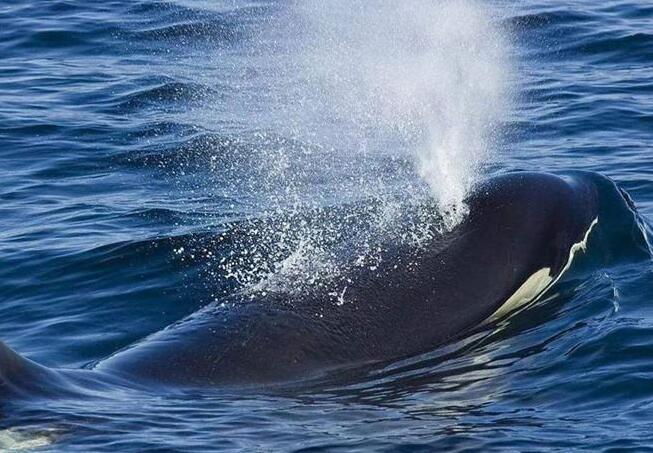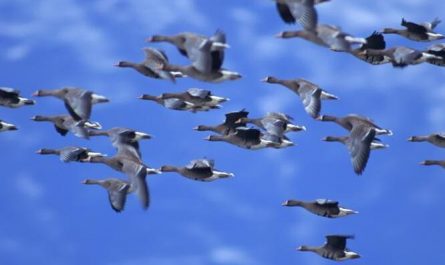The reason why whales spray water jets in seawater
The whale is the “giant” in the ocean and the largest animal on the earth. Many people mistakenly think that a whale is a fish, but in fact it is not a fish, but a beast. It belongs to the order Mammals Cetacea. Millions of years ago, whales also lived on land. At that time, they had four legs and could walk on land. Later, due to changes in living conditions, they moved to live in the water. After a long time, their body structure has gradually changed. The forelimbs have become fish-like pectoral fins, the tail has become flat, and the whole body has become streamlined like a rudder to swim in the water.
After the whales entered the water, although their external organs changed so much that they were mistaken for fish, their internal organs still maintained certain characteristics of life on land, such as lung respiration, viviparous birth, and breastfeeding. Because whales use their lungs to breathe, they cannot stay underwater for a long time. Generally, it takes about half an hour to breathe once on the surface of the water; it takes just over 10 minutes. When a whale comes out of the water, it must first expel a large amount of exhaust gas from its lungs. The pressure of the exhausted gas is very high, which can spray the sea water close to the nostrils out of the sea; at the same time, it is accompanied by a huge sound, much like the whistle of a small train.
Since the air on the sea surface is cooler than the gas in the whale lungs, the moisture exhaled from the whale lungs condenses into many small water droplets when encountering cold air, forming a mist-like water column. This phenomenon is called “tide spray” or “water spray”. The jets of various whales have different heights and shapes. The jets of blue whales are as high as 9-10 meters. Whalers can not only spot the whale’s whereabouts based on the water column on the sea, but also judge the type of whale based on the height and shape of the water column.
The Zoological History of Whales
From an anatomical point of view, many characteristics of cetaceans show a high degree of adaptation to life in the ocean. However, anatomical evidence is not enough to answer many questions about the origin of cetaceans. However, from the perspective of biochemistry and genetics, cetaceans are closely related to ungulates, and the fossil record (about 50 million years ago) also supports that cetaceans evolved from ungulates.
The ancestors of cetaceans are most likely terrestrial ungulates born in North America, Europe and Asia-Mesonychidae (Mesonychidae). The members of the Chinese claws are as petite as domestic dogs, and some are as tall as bears. However, many animals have evolved from small to large. Therefore, cetaceans may have evolved from small Chinese beasts. According to speculation, these beasts have few teeth. The middle claws that fish in shallow waters gradually transformed into amphibious life forms, and then became various whales and dolphins in the long process of evolution.
The first cetaceans to appear are the Archaeocetes (Protocetidae).
The primitive whales all appeared 50 million years ago, and their fossils are distributed in Asia, Africa and North America. Scientists know more about the ancient Pakistani whale (also known as Pakicetus) discovered in Pakistan today. This fossilized creature that lived between 50 and 53 million years ago has the head fumarole (nostril) moved to the rear. Animals that have long, narrow ventricles and still have hind limbs. Fossil evidence found in the Indian rock formations of the same period also shows that there is an unimaginable high degree of ecological divergence among early cetaceans.
The more advanced ancient whales belong to the Basilosauridae (Basilosauridae) that was once recognized as reptiles. Animals in this family lived approximately 38-45 million years ago. Although they were first discovered by American geologists in Louisiana, similar fossils have also been widely found in New Zealand and even Antarctica. This discovery shows that ancient whales had spread to southern waters 40 million years ago.
Another branch of the more advanced ancient whales is the Dorudontinae subfamily (Dorudontinae), which contains at least 6 species of animals. They have narrow upper jaws and may be filter-feeding; or are like most toothed whales in living Generally, fish, squid and birds can be quickly caught by this structure.
After a long process of evolution, the ancient whale suborder went extinct in the Oligocene. But the other two branches of the cetacean family, namely Mysticeti and Odontoceti, have derived 17 families of nearly 100 species
The morphological characteristics of whales
The body of the cetacean is 1-30 meters long, the body shape is like a fish, the skin is bare, only the snout has a few hairs, no sweat glands and sebaceous glands. The forelegs are fin-shaped, the hind limbs are completely degenerated, and there is only one pair of small bone fragments in the body. The skin at the end of the tail expands left and right to form a horizontal tail fin. There is no auricle, because there is a thick layer of fat under the skin to keep warm and reduce the body’s specific gravity, which is good for swimming. Some species have dorsal fins. The eyes are small, no nictitating membrane, no lacrimal glands, and poor vision. There are 1 to 2 external nostrils located on the top of the head, commonly known as air jets. Although there is no pinna, he has sensitive hearing. 1 lobe on the left and right sides of the lung. Breastfeeding in water. The stomach is divided into 4 compartments, and the general life span is 50 to 100 years old in a natural environment.
Cetaceans are completely aquatic mammals, and some mainly rely on echolocation to find food and avoid enemies. It generally feeds on molluscs, fish and zooplankton, and some species can also prey on seals and fur seals. Every once in a while, you must change your air. Generally, in winter, it swims from high-latitude cold water areas to low-latitude hot water areas to give birth, and in summer, it swims from low latitudes back to high-latitude cold water areas to prey.






